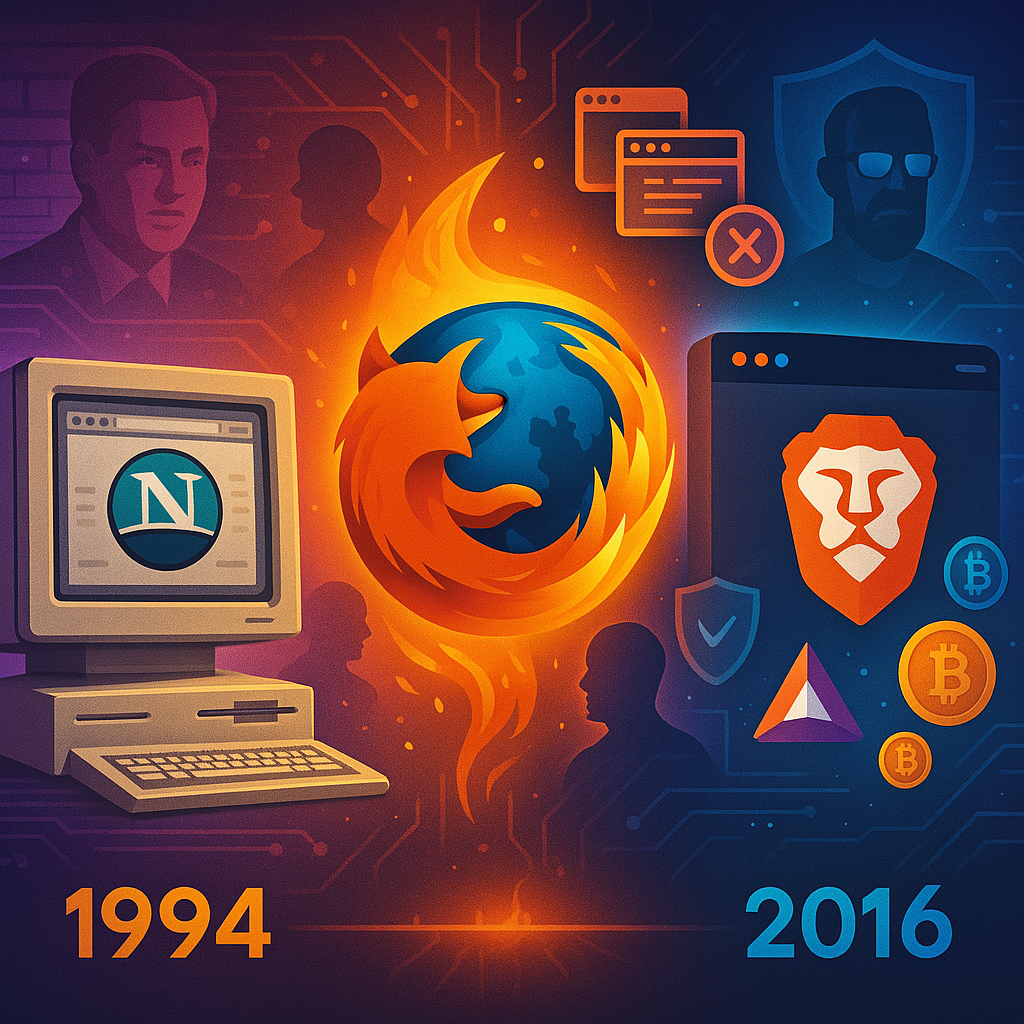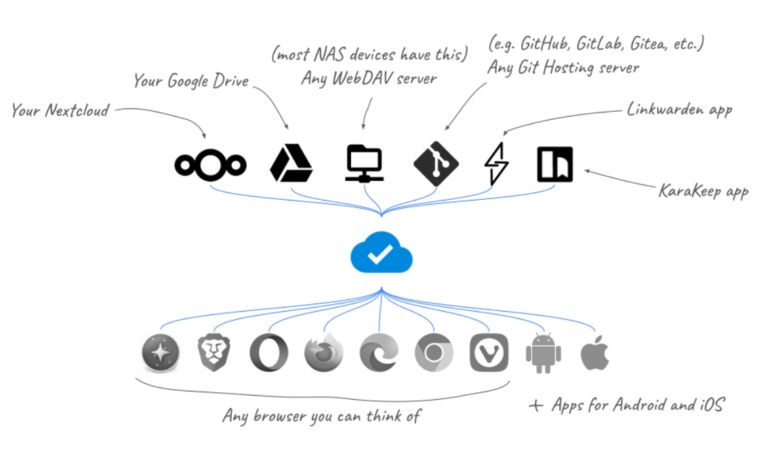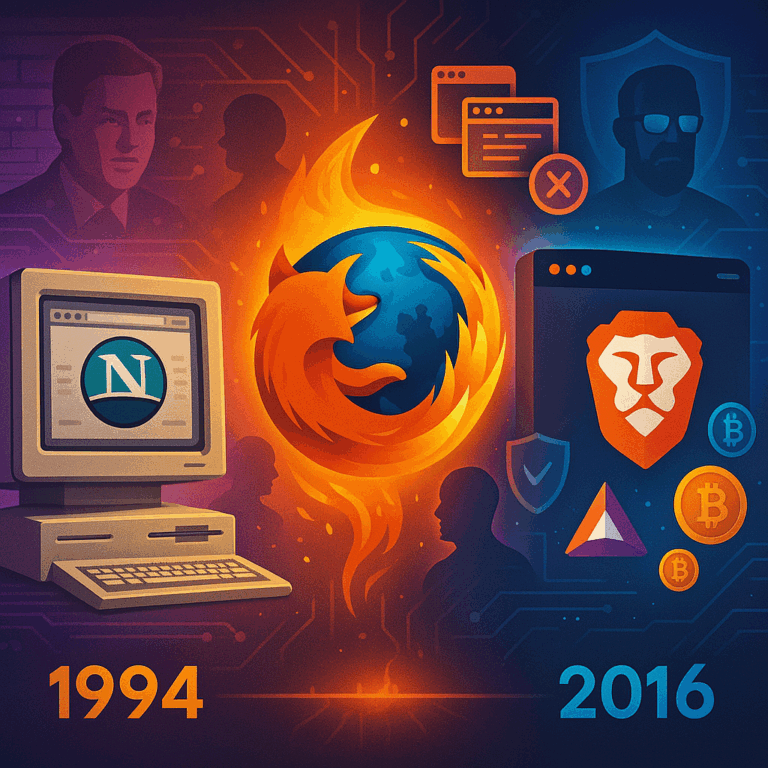
In the ever-evolving saga of web browsers, few stories carry the weight of innovation, resistance, and user-first ideology like the lineage that stretches from Netscape Navigator to Firefox—and now, Brave.
🌐 The Birth of Netscape: Pioneering the Web (1994)
It all began with Netscape Navigator, released in 1994. Created by a team led by Marc Andreessen and Jim Clark, Netscape was one of the first widely used web browsers and played a key role in bringing the internet to everyday users. The browser was fast, relatively user-friendly, and quickly became dominant.
However, its reign was short-lived. Microsoft entered the arena with Internet Explorer, bundled into Windows—a move that led to the famous browser wars of the late 1990s and ultimately Netscape’s decline.
🧪 Mozilla and the Rise of Firefox (2002)
Netscape’s source code was donated to the newly founded Mozilla Foundation in 2003, which aimed to continue the spirit of open-source software. From that, Firefox emerged in 2004—a browser designed to put users first, prioritize security, and foster an open, standards-based internet.
Firefox gained traction among users disillusioned with Internet Explorer’s stagnation. With features like tabbed browsing, pop-up blocking, and frequent updates, Firefox helped shift browser development toward innovation and user empowerment.
One key figure during this phase was Brendan Eich, co-founder of Mozilla and creator of JavaScript. Eich’s focus on open-source values and user privacy helped define Mozilla’s philosophy—and would shape the next chapter.
🦁 Brave: Privacy by Design (2016)
Fast-forward to 2015: Brendan Eich founded Brave Software, driven by his frustration with invasive advertising and surveillance-based business models. Brave’s flagship browser launched in 2016, designed to block ads and trackers by default. It integrated features like HTTPS Everywhere, fingerprinting protection, and a bold new model: Basic Attention Token (BAT), which rewards users for viewing privacy-respecting ads.
Brave went beyond just privacy—it challenged the advertising status quo. Instead of tracking users, it offered a decentralized, user-centric alternative. The browser also grew to include Tor integration, crypto wallet support, and more—turning it into a secure and feature-rich gateway to the web.
🔁 A Full-Circle Philosophy
The thread connecting Netscape, Firefox, and Brave is unmistakable: a pursuit of openness, user empowerment, and resistance against monopolistic control. From Netscape’s pioneering spirit to Brave’s defiant privacy-first stance, each browser evolved in response to the web’s shifting landscape—but the core ideals held firm.
Brave may be relatively new, but its DNA runs deep. For those who value speed, privacy, and independence, it’s not just a browser—it’s a statement.





